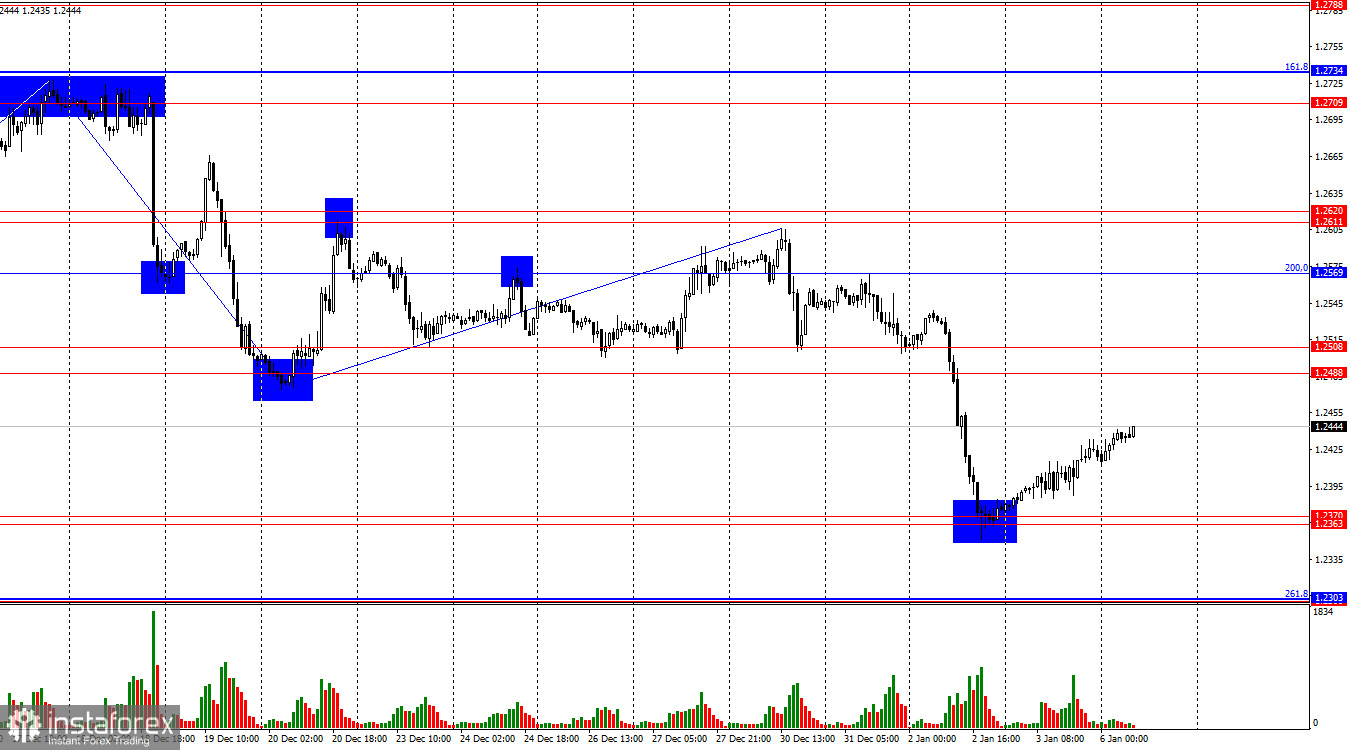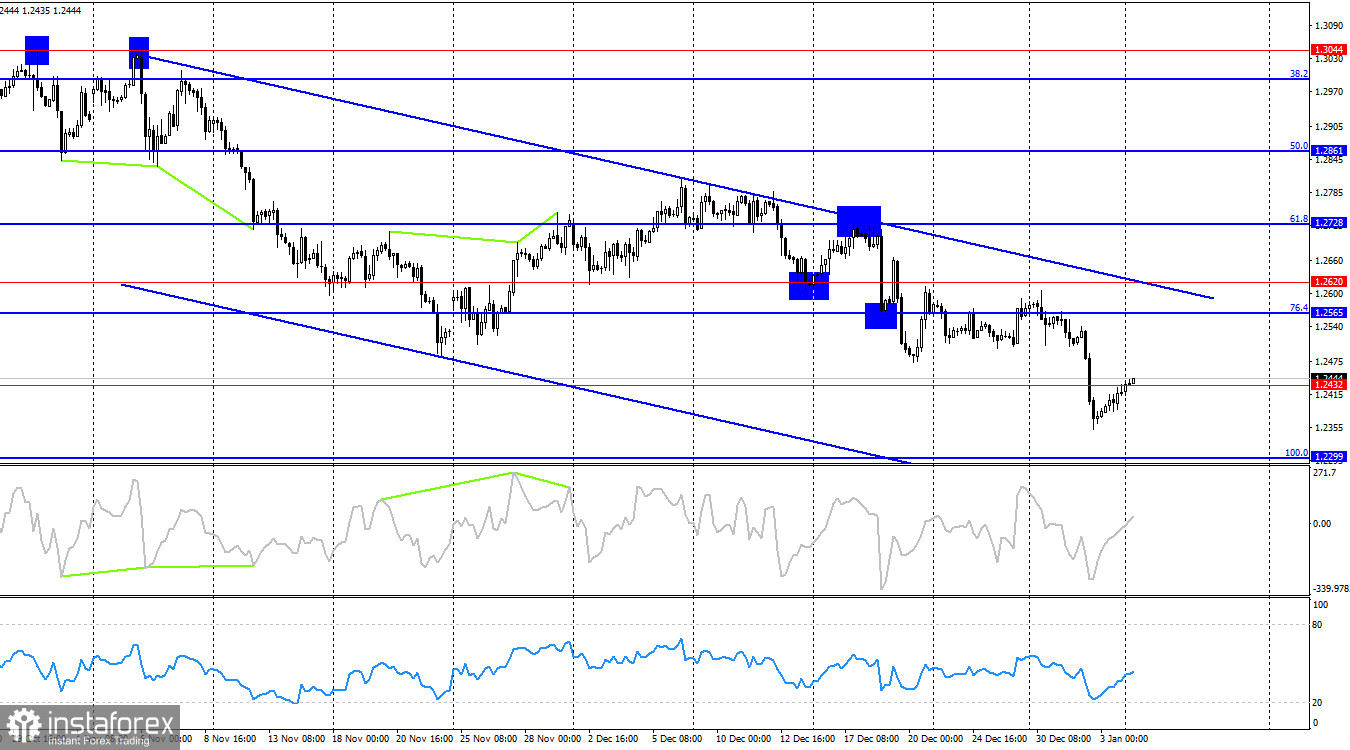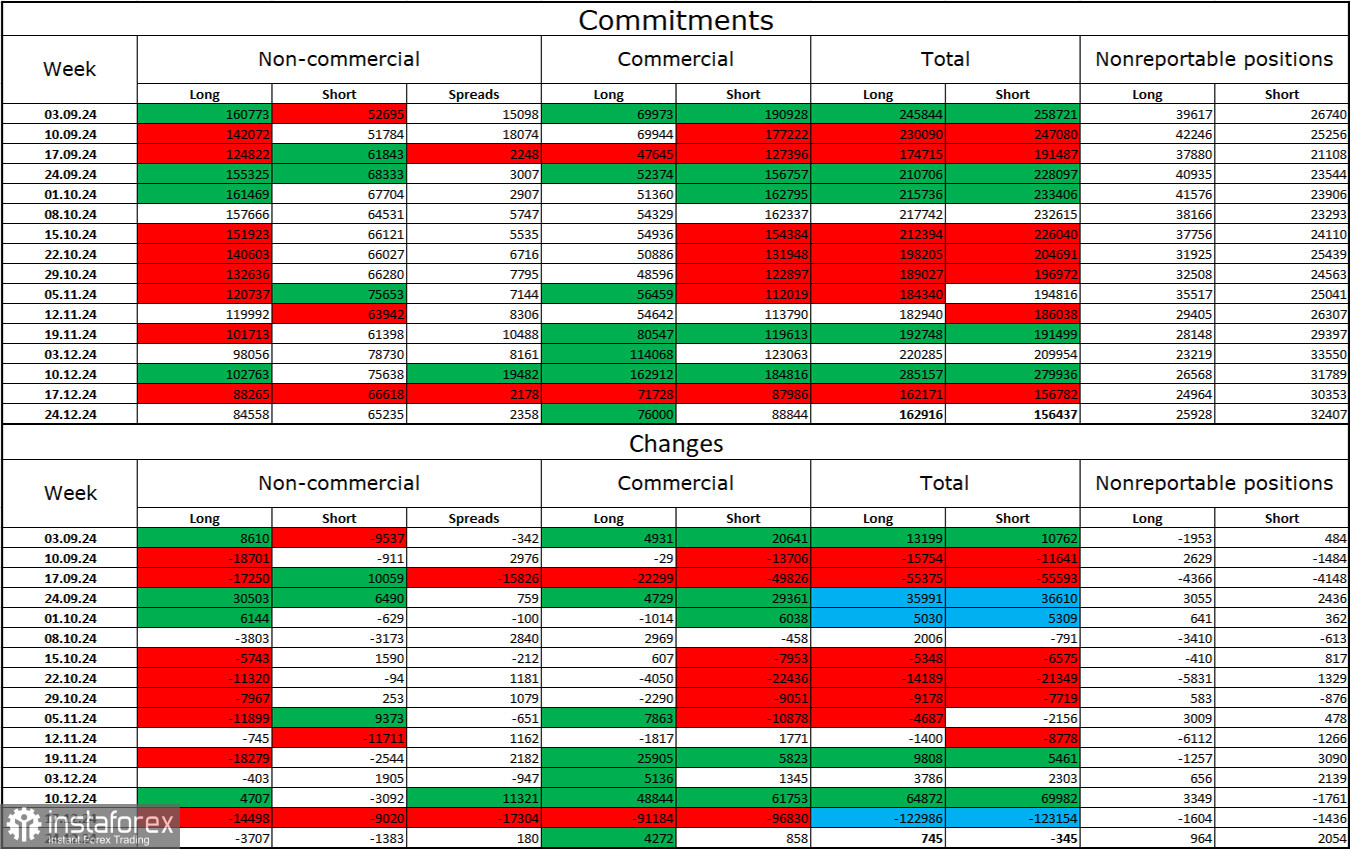On the hourly chart, the GBP/USD pair rebounded from the support zone of 1.2363–1.2370 on Friday, reversed in favor of the pound, and began rising toward the resistance zone of 1.2488–1.2508. A rebound from this resistance zone will favor the U.S. dollar and resume the decline within the bearish trend toward the 1.2363–1.2370 zone. Friday's pound growth was ensured by profit-taking from the bears, not attacks by the bulls.

The wave structure remains straightforward. The last completed upward wave failed to break the peak of the previous wave, while the new downward wave broke the previous low. Therefore, the bearish trend continues without question. For this trend to end, the pound needs to rise to at least the 1.2611–1.2622 zone and close confidently above it.
On Friday, as mentioned, bears had the opportunity to launch another attack, as the most significant U.S. ISM Services PMI showed better-than-expected values. However, market participants felt that Thursday's dollar gains were sufficient for the time being. This week, U.S. reports on labor market changes and unemployment rates will shape trader sentiment through January. If the data is strong, bears will likely continue their attacks, as most factors favor the dollar's strength. The U.S. economy continues its strong growth, and Donald Trump's election victory is associated with inflationary growth, which benefits the dollar. Additionally, markets anticipate more aggressive easing actions by the Bank of England in 2025 compared to the Federal Reserve, which also supports the U.S. dollar. Therefore, unless the information backdrop changes drastically, the pound will likely only manage corrective waves.

On the 4-hour chart, the pair made two rebounds from the 76.4% corrective level at 1.2565 and resumed its decline toward the 100.0% Fibonacci level at 1.2299. The downward trend channel indicates the bears' dominance, which they are unlikely to relinquish anytime soon. Only a close above the channel would suggest a strong pound rally. No emerging divergences are observed today.
Commitments of Traders (COT) Report:

The sentiment of the "Non-commercial" category of traders has changed minimally over the past week. The number of long positions held by speculators decreased by 3,707, while short positions dropped by 1,383. Bulls still have the upper hand, but their advantage has been waning in recent months. The gap between long and short positions is now only 19,000: 84,000 versus 65,000.
In my view, the pound remains poised for further declines, as COT reports indicate a strengthening of bear positions almost weekly. Over the last three months, long positions have decreased from 160,000 to 84,000, while short positions have risen from 52,000 to 65,000. I believe professional traders will continue to shed long positions or increase short positions as all potential bullish factors for the pound have already been priced in. Graphical analysis also supports the pound's decline.
News Calendar for the U.S. and U.K.:
- U.K. – Services PMI (09:30 UTC).
On Monday, the economic events calendar contains only one entry. Its influence on trader sentiment today is expected to be minimal.
Forecast and Trading Recommendations for GBP/USD:
- Selling the pair was viable after closing below the 1.2488–1.2508 zone with a target of 1.2370, which was achieved as expected.
- Buying was considered from the 1.2363–1.2370 zone on the hourly chart, targeting 1.2488. However, buying cannot be prioritized at this time, and the pound may not even reach the specified target.
- New sales are viable upon a rebound from the 1.2488–1.2508 zone.
Fibonacci Levels:
- Hourly chart: 1.3000–1.3432.
- 4-hour chart: 1.2299–1.3432.





















